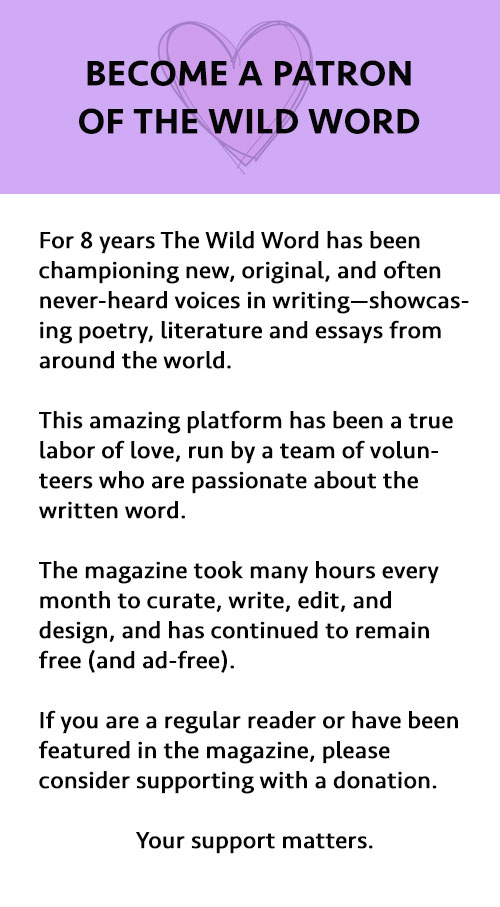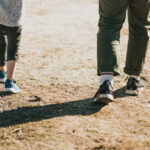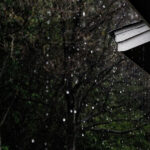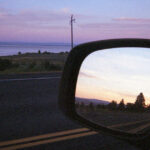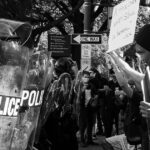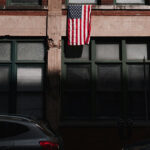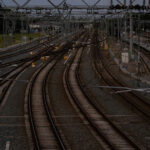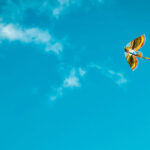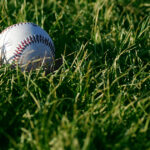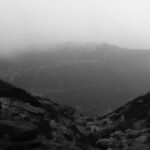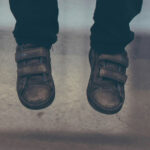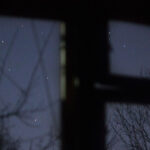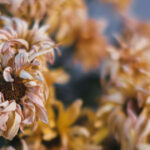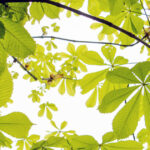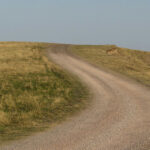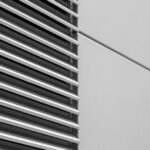
We love artists at The Wild Word.
Our Artist-in-Residence page provides a space for artists to showcase their work and to spread their creative wings. In their month of residency, invited artists are encouraged to collaborate with other contributors within the magazine, to experiment and develop new projects, while giving us an insight into their creative process.
Our THE LONG DAYS OF SUMMER Artist-in-Residence is the comic artist Henna Räsänen.

LONG HOT SUMMER
By Henna Räsänen
The sun’s distance to Earth is 149.6 million kilometers, defined in August 2012 by the International Astronomical Unions vote. The Earth orbits around the sun in an elliptical track. Its closest approach to the sun—“perihelion”—is in early January. The furthest point—“aphelion”—is in early July each year. The measurement of the sun’s distance is currently based on the speed of light, a fixed distance not depending on the sun’s mass which was the previous measuring system.
In Finland, my country of origin, the sun’s altitude is lower and thus it feels more intense than in lower altitudes. So it does, for example, in Aotearoa / New Zealand.
Burn burn burn. In Finland the sun doesn’t set in peak summer—what a curious place! To be honest, I’m tired of talking about that but I will, just for the sake of it, one more time.
Get yourself a planet that can do both.
So. Summer. The sun stays up, the people stay up, get funky, get real funky, now it’s all jazz hands, it’s getting exhausting but the beat goes on. Time to wake up. The darkness embraces you and it feels good at first, no one sees mistakes where there is no light, am I right? Some months later, you are over being over it. Everything has a downside, the ellipse’s edge is currently close close close and you can stop embracing us now, I want to see, vitamin D, my skin droops and the snow banks are higher than that dog. Wait where did the dog go? THE SUN. It returns, scorches, stay up, what time is it, sun doesn’t come down, I won’t come down, repeat repeat repeat until the inevitable.
Of course this is all a memory, I haven’t actually lived there for years.
Now I live in Berlin, where people like to tell anyone who will listen how there has been no summer, again, and they have only been at a lake 10 times this year, where are the summer days? Why did it rain last week?
In reality, the European summers are getting hotter and hotter. You know already what’s coming. Greenhouse emissions, ozone layer, yes, you know this by now. Currently it’s hard for a non-scientist lay-mensch like me to really predict what climate change will bring in the long-term. Pounding rains, the next Ice Age, the scorched Earth. Unless the emissions are cut, maybe, possibly, if even then. Might be we’ve tipped over already.
Nothing new here shouts the crowd. The crowd. Move on, or don’t, your cigarette butts shall populate the Earth long after we are gone. Uranium cylinders sitting on a parking lot in Siberia, it’s not nuclear waste, it’s just radioactive material, technically it’s not illegal they say, no one uses copper anymore, it’s now all about steel I’ve heard. The contents recycled, but unusable in the future as the technology changes. What will we do with all those containers then?
Climate change will hit the most vulnerable the hardest, the poor, and the developing countries, as well as create “poverty pockets” across the globe. Countries near the equator such as Bangladesh and Nigeria are at extreme risk from climate change.
How I see it, the rich have created a problem that the poor will pay dearly for.
Ahh those summer nights.
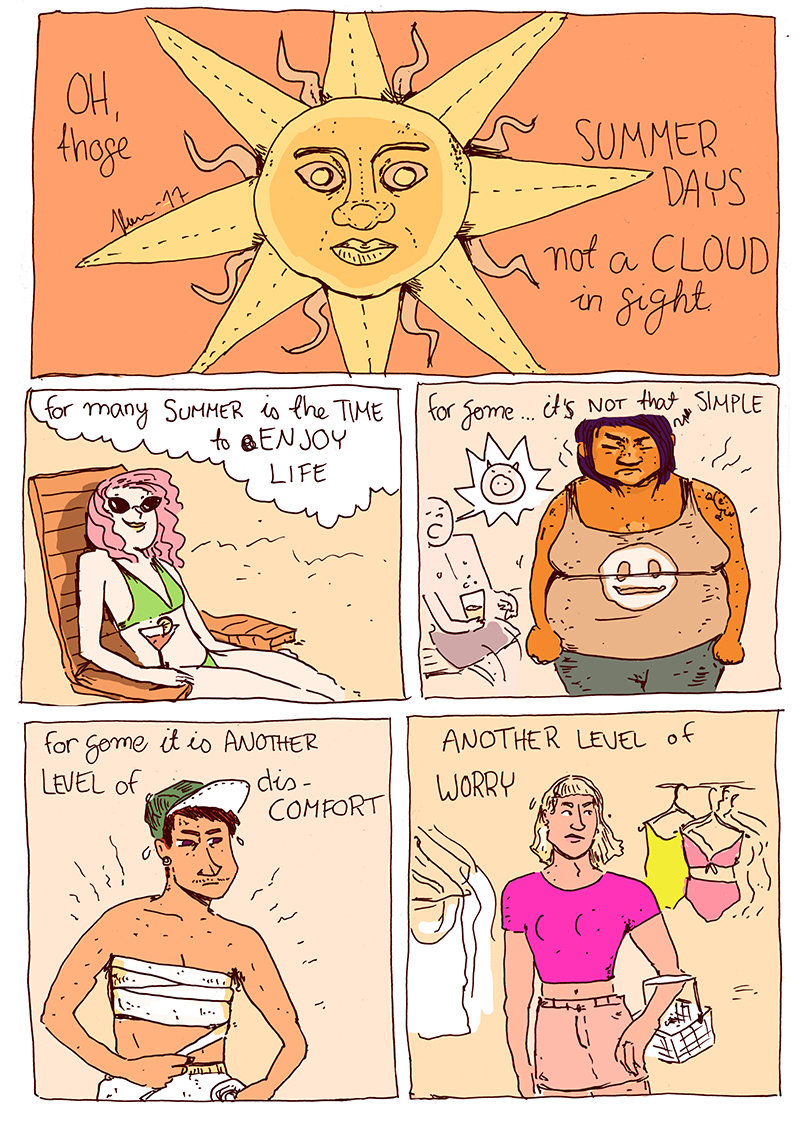
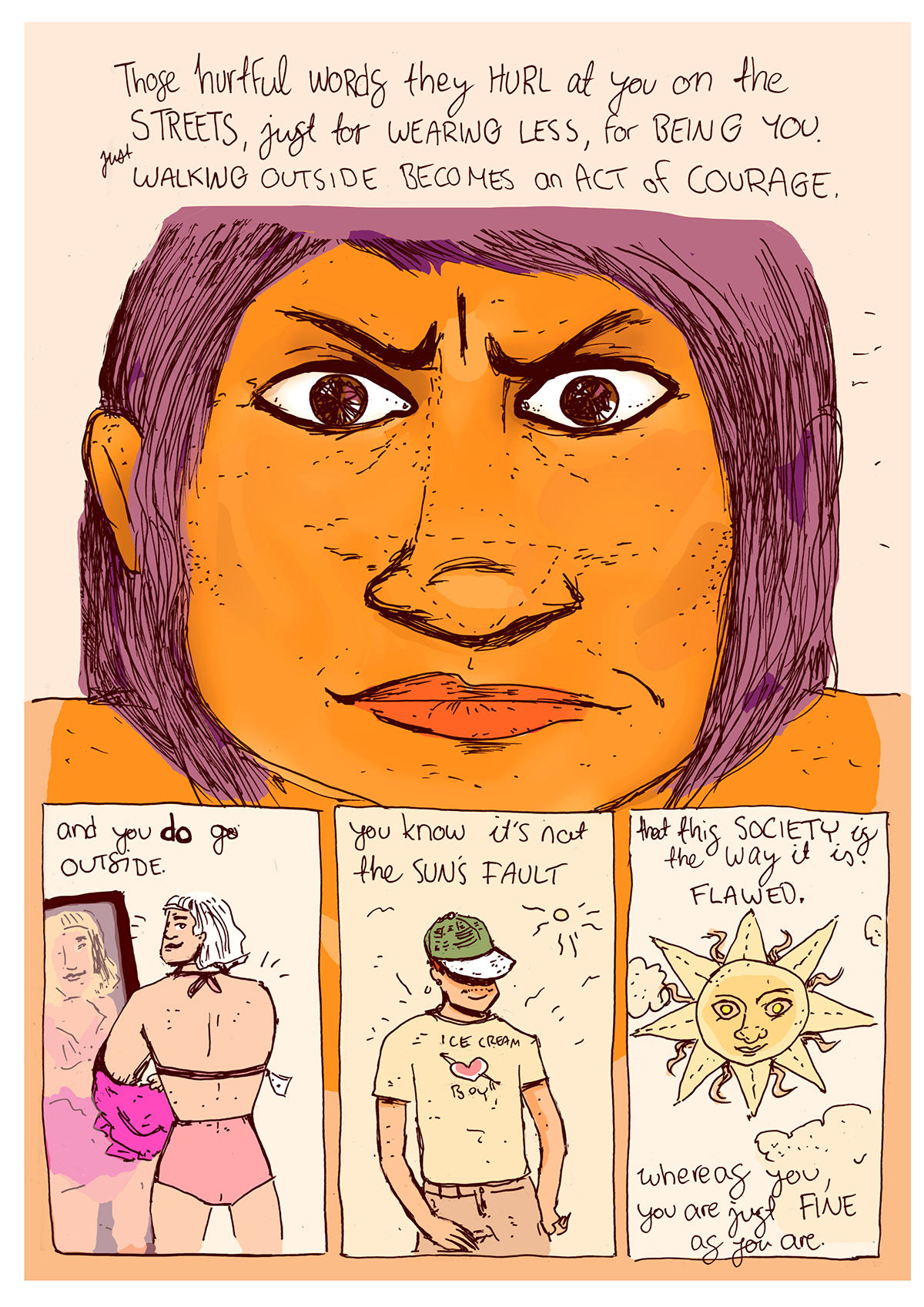
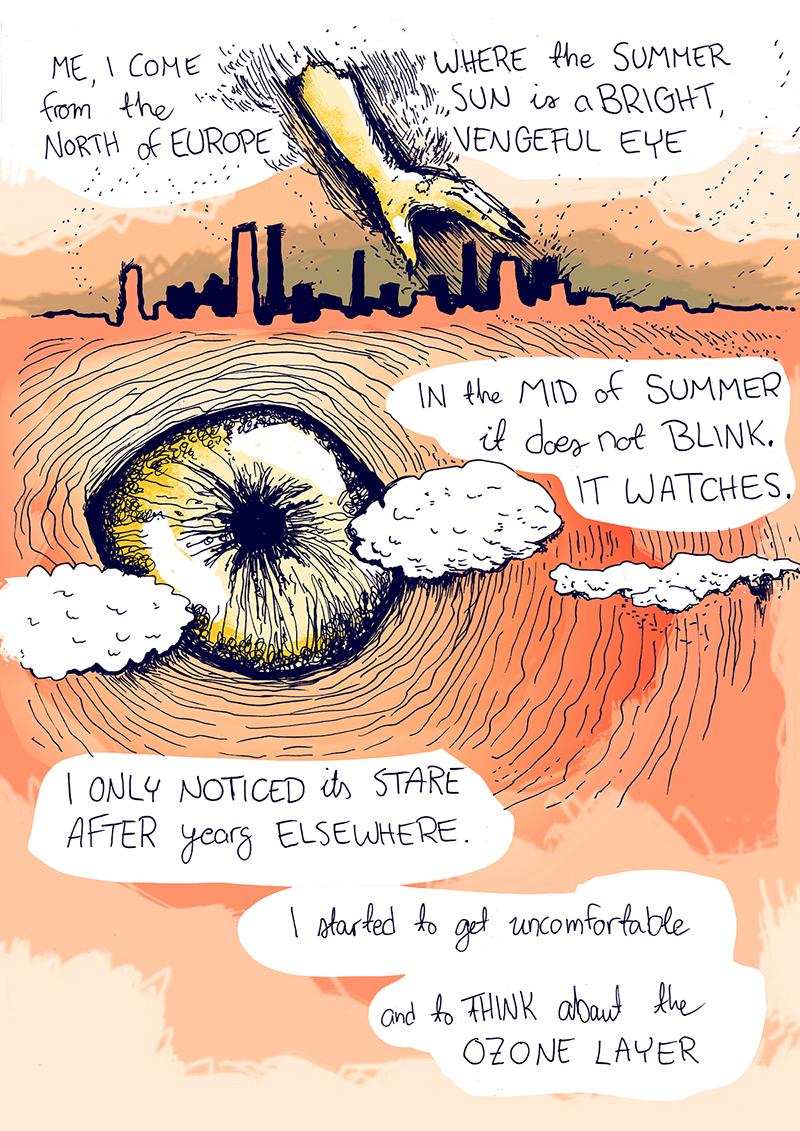
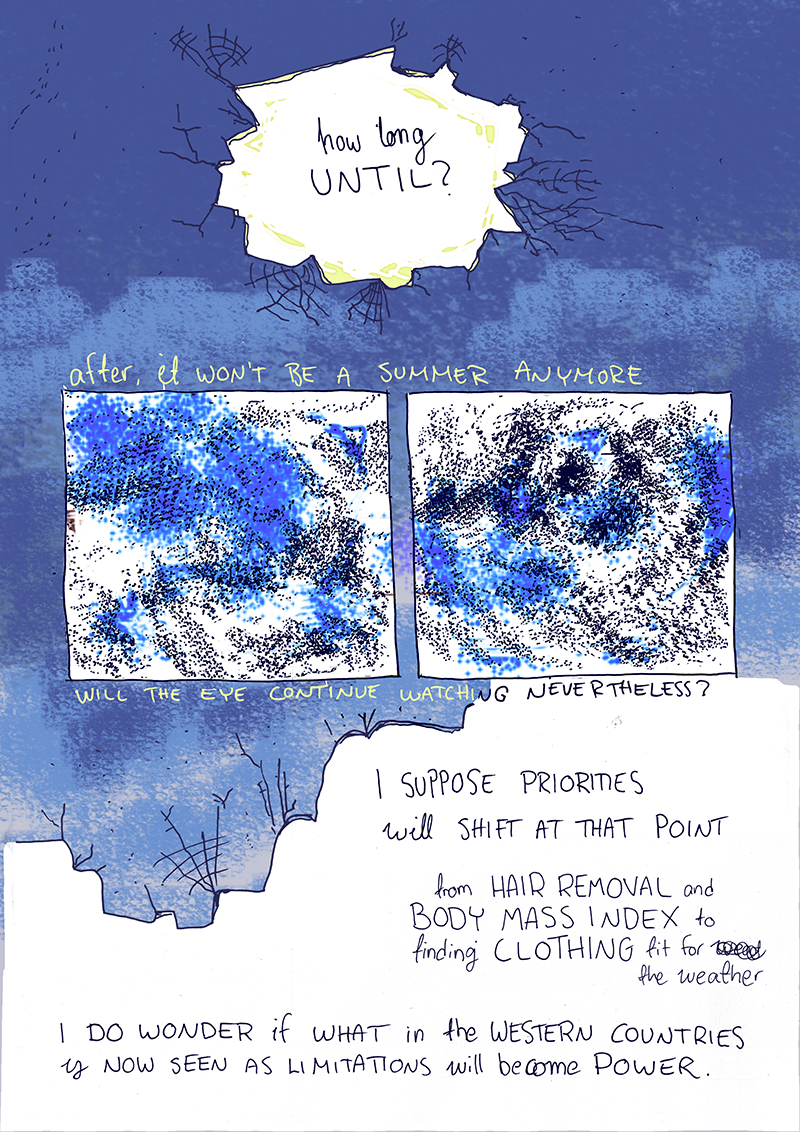

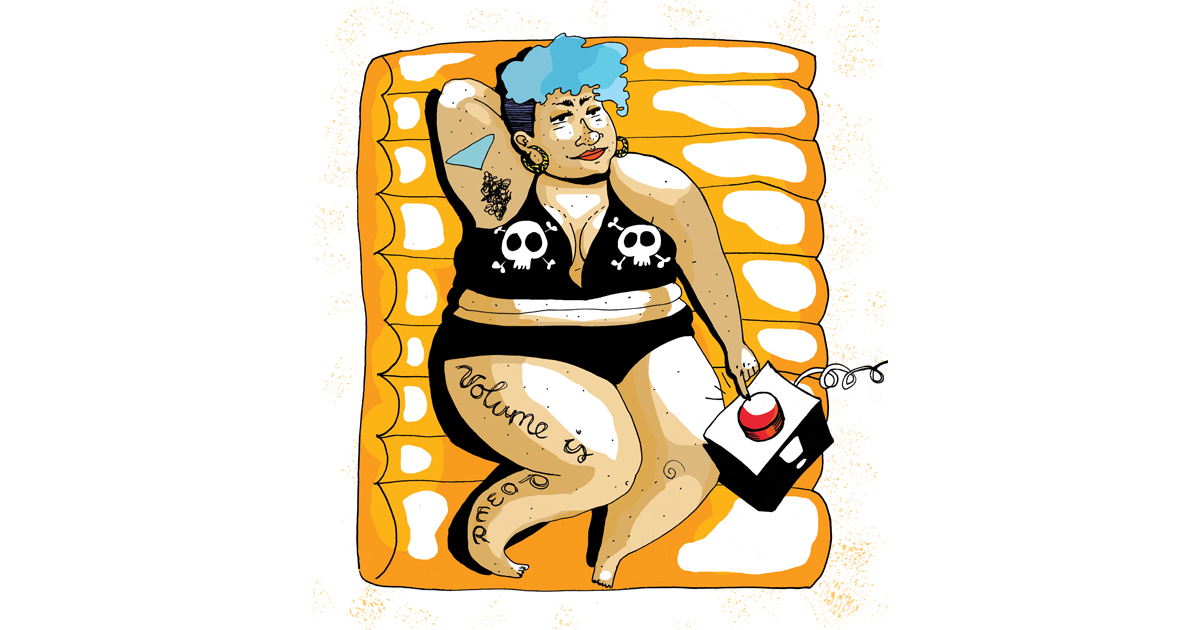
LONG HOT SUMMER
By Henna Räsänen
The sun’s distance to Earth is 149.6 million kilometers, defined in August 2012 by the International Astronomical Unions vote. The Earth orbits around the sun in an elliptical track. Its closest approach to the sun—“perihelion”—is in early January. The furthest point—“aphelion”—is in early July each year. The measurement of the sun’s distance is currently based on the speed of light, a fixed distance not depending on the sun’s mass which was the previous measuring system.
In Finland, my country of origin, the sun’s altitude is lower and thus it feels more intense than in lower altitudes. So it does, for example, in Aotearoa / New Zealand.
Burn burn burn. In Finland the sun doesn’t set in peak summer—what a curious place! To be honest, I’m tired of talking about that but I will, just for the sake of it, one more time.
Get yourself a planet that can do both.
So. Summer. The sun stays up, the people stay up, get funky, get real funky, now it’s all jazz hands, it’s getting exhausting but the beat goes on. Time to wake up. The darkness embraces you and it feels good at first, no one sees mistakes where there is no light, am I right? Some months later, you are over being over it. Everything has a downside, the ellipse’s edge is currently close close close and you can stop embracing us now, I want to see, vitamin D, my skin droops and the snow banks are higher than that dog. Wait where did the dog go? THE SUN. It returns, scorches, stay up, what time is it, sun doesn’t come down, I won’t come down, repeat repeat repeat until the inevitable.
Of course this is all a memory, I haven’t actually lived there for years.
Now I live in Berlin, where people like to tell anyone who will listen how there has been no summer, again, and they have only been at a lake 10 times this year, where are the summer days? Why did it rain last week?
In reality, the European summers are getting hotter and hotter. You know already what’s coming. Greenhouse emissions, ozone layer, yes, you know this by now. Currently it’s hard for a non-scientist lay-mensch like me to really predict what climate change will bring in the long-term. Pounding rains, the next Ice Age, the scorched Earth. Unless the emissions are cut, maybe, possibly, if even then. Might be we’ve tipped over already.
Nothing new here shouts the crowd. The crowd. Move on, or don’t, your cigarette butts shall populate the Earth long after we are gone. Uranium cylinders sitting on a parking lot in Siberia, it’s not nuclear waste, it’s just radioactive material, technically it’s not illegal they say, no one uses copper anymore, it’s now all about steel I’ve heard. The contents recycled, but unusable in the future as the technology changes. What will we do with all those containers then?
Climate change will hit the most vulnerable the hardest, the poor, and the developing countries, as well as create “poverty pockets” across the globe. Countries near the equator such as Bangladesh and Nigeria are at extreme risk from climate change.
How I see it, the rich have created a problem that the poor will pay dearly for.
Ahh those summer nights.
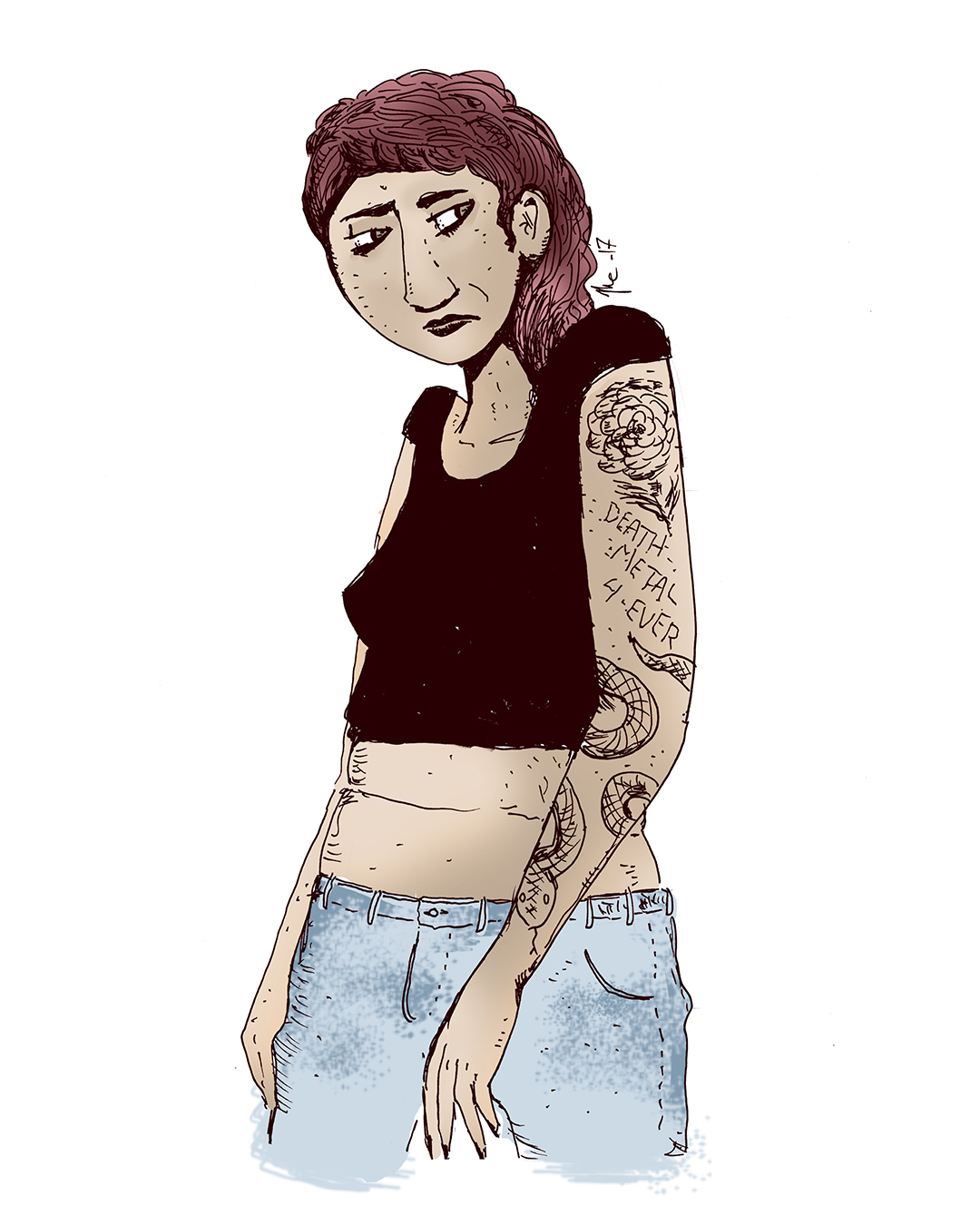
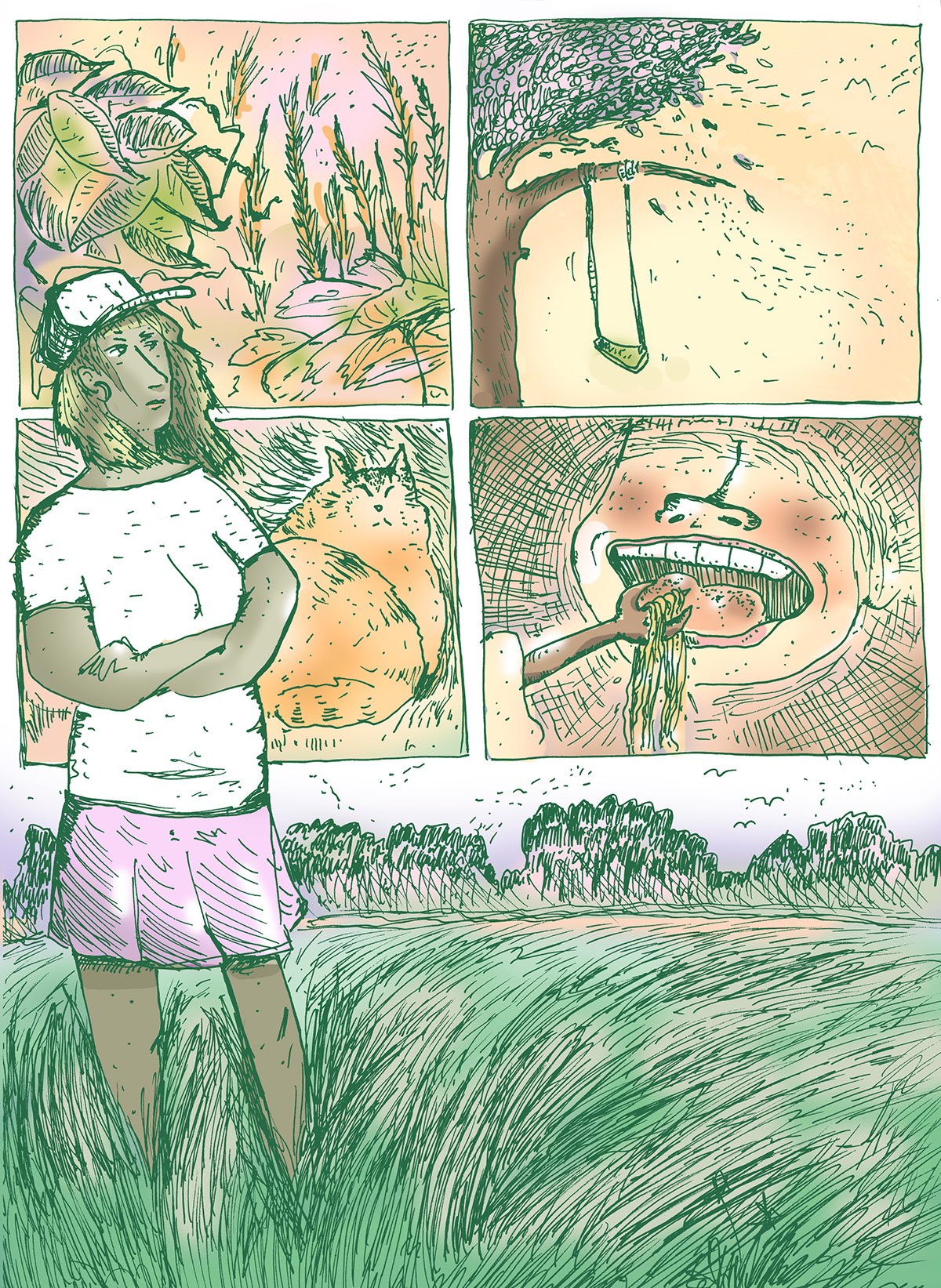

‘Blood in Stadtbad’


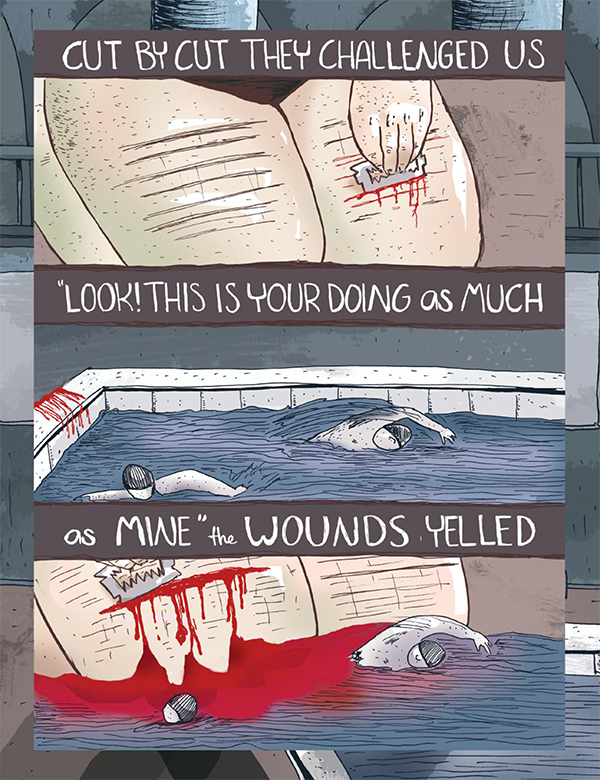
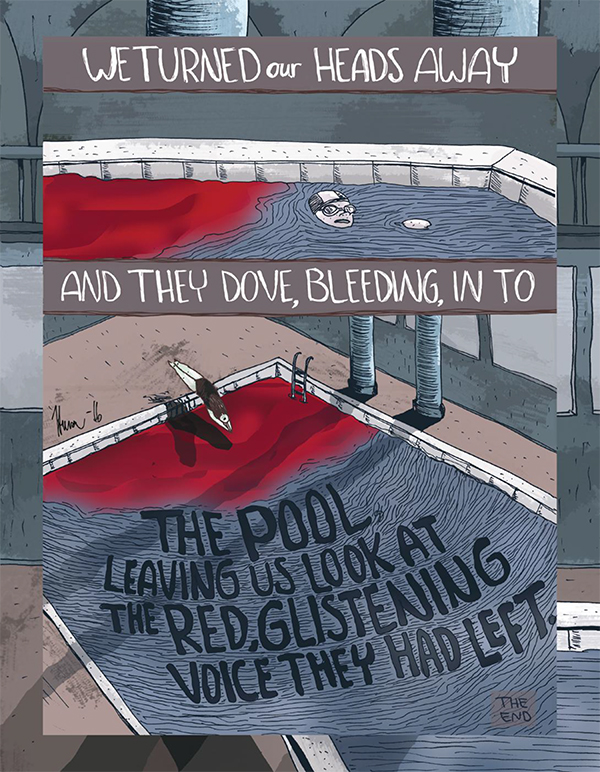
Blood in Stadtbad (2016) deals with self-mutilation. It was originally made for C’est Bon anthology, for a book themed Bleed. It’s a surrealist journey to gaze in public spaces, pain and responsibility.

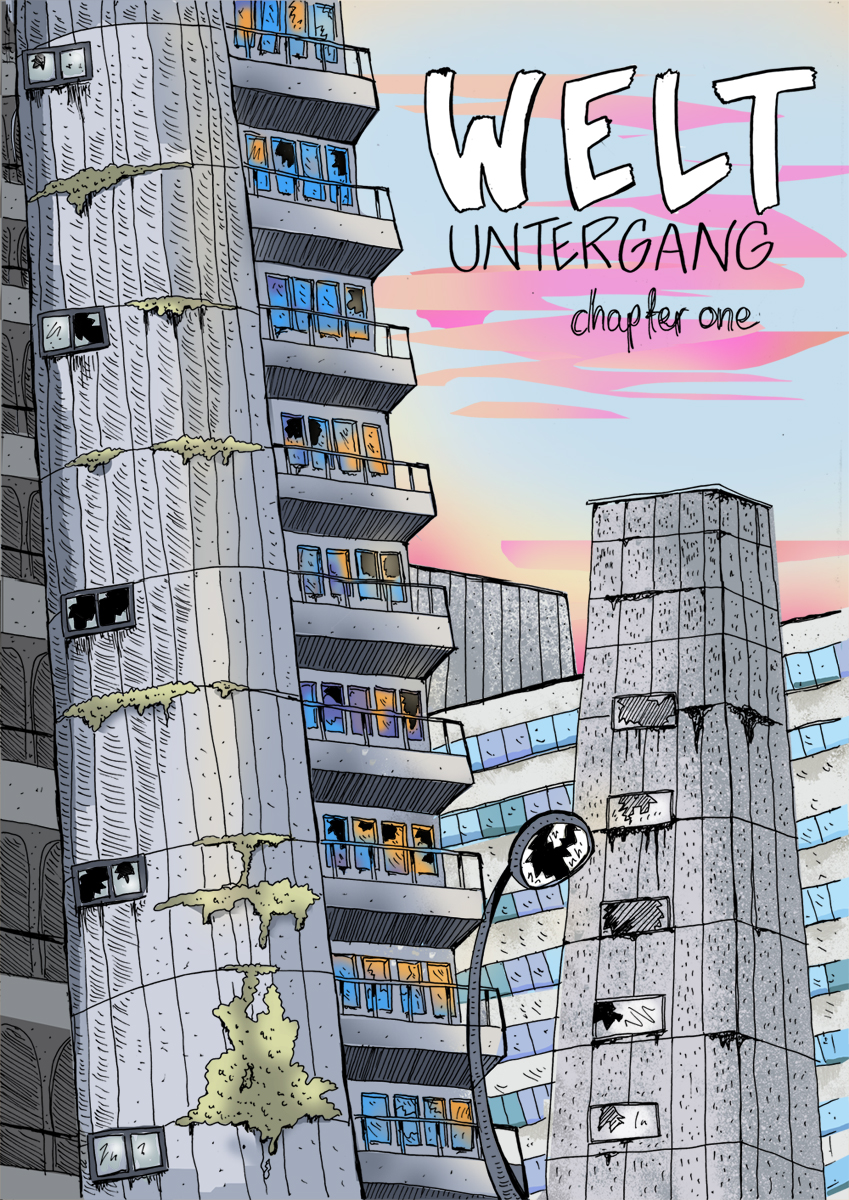
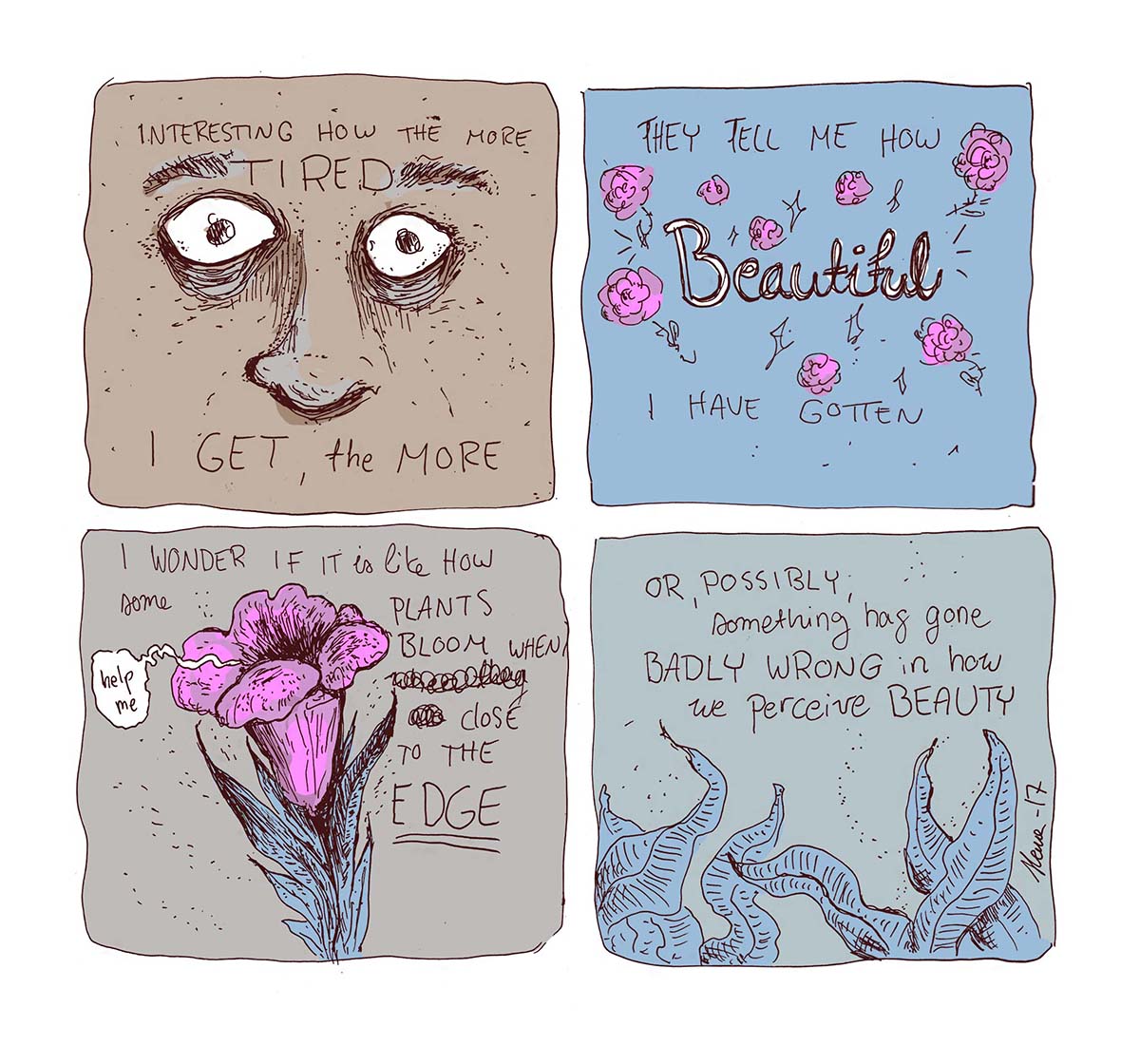
First page of the upcoming graphic novel “WELTUNTERGANG – a post-apocalyptic queer adventure” set in the ruins of Berlin. Publishing of the first chapter is planned for this autumn, stay tuned!
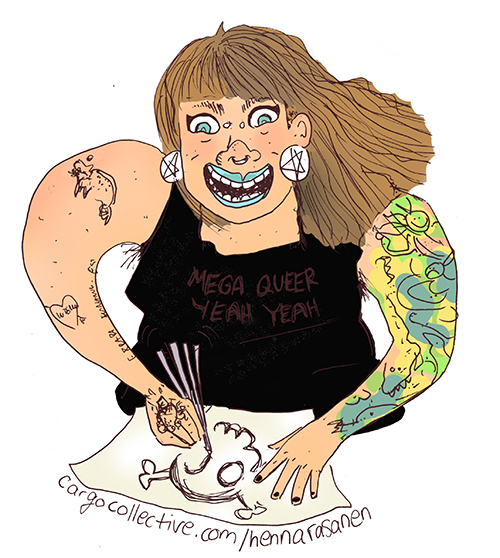
Iʼm a Berlin-based, queer femme and non-binary political comic artist and event organizer. My work focuses on portraying queer and punk life through understanding, honest and prickly humor. I aim to understand my own surroundings as well as the currents of the swiftly changing political landscape and changing identities of Europe through visual storytelling. As an alternative comic artist I am focused on both the politics and poetics of comics, from norms to the awaiting apocalypse. I work mostly in English, and occasionally in my native language Finnish. Iʼm part of the Finnish feminist Femicomix network as well as one of the founding members of the German Feministische Comics Netzwerk.
I published my debut book A Hypothetical Love Triangle (edition assemblage 2017). I’ve published a number of workshop zines focused on norms and a tour journal from my travels with the Berlin-based feminist punk band Respect My Fist. I created my first, now out-of-print, self-published art-zine together with the artist and researcher Freja Högback in 2010.
My work has been exhibited at the SuperQueeroes – Unsere LGBTI*- Comic-Held innen exhibition at the Schwules Museum (2016) in Berlin. Recent work has appeared in the Swedish experimental comic anthology Cʼest Bon and in the Mitä sä täällä teet? anthology that highlights the voices of immigrants in Finland. I’m the editor for the German Feministische Comics Netzwerk’s contribution for the international Divide & Conquer anthology and have previously worked as an editor for two comic anthologies; On The Way To Peace (2015) and Sikala – comics about factory farming (2010).
This year I’ve been working on two graphic novels: Blood, Sweat & Lipstick, a research graphic novel on new feminine gender expressions and experiences and WELTUNTERGANG, a post-apocalyptic queer adventure set in the ruins of Berlin. The first chapter of WELTUNTERGANG will be released as an independent magazine in Berlin during Fall 2017. Besides creating art I teach comic workshops focused on dealing with norms through comic medium and this Autumn am offering a 6-week-long comic course at xart splitta in Neukölln.
Portfolio // https://cargocollective.com/
Instagram // https://instragram.com/henna.
Blog // https://ahypoth.tumblr.com

